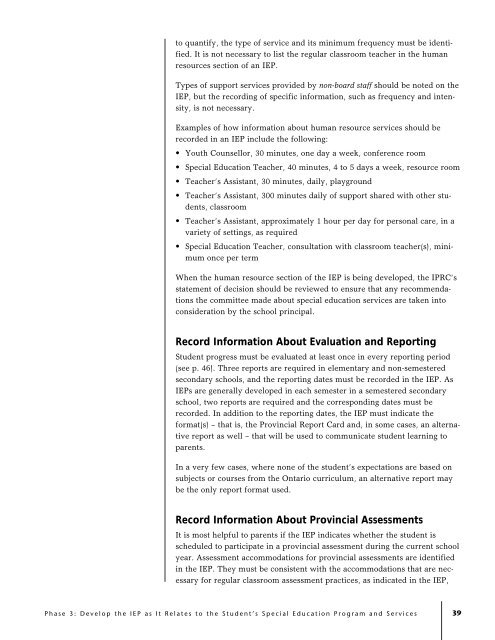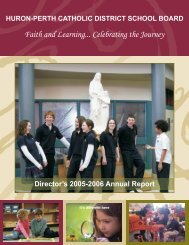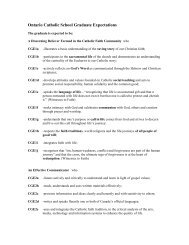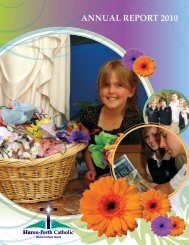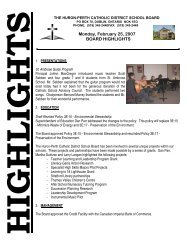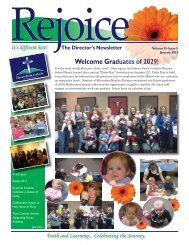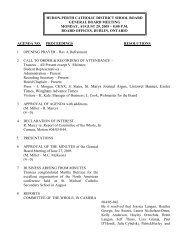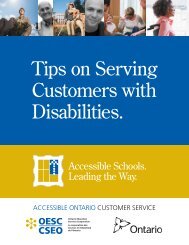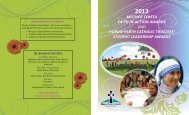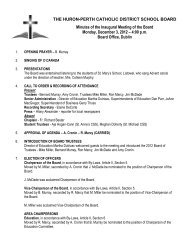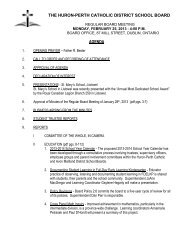The Individual Education Plan (IEP) - A Resource Guide, 2004
The Individual Education Plan (IEP) - A Resource Guide, 2004
The Individual Education Plan (IEP) - A Resource Guide, 2004
Create successful ePaper yourself
Turn your PDF publications into a flip-book with our unique Google optimized e-Paper software.
to quantify, the type of service and its minimum frequency must be identified.<br />
It is not necessary to list the regular classroom teacher in the human<br />
resources section of an <strong>IEP</strong>.<br />
Types of support services provided by non-board staff should be noted on the<br />
<strong>IEP</strong>, but the recording of specific information, such as frequency and intensity,<br />
is not necessary.<br />
Examples of how information about human resource services should be<br />
recorded in an <strong>IEP</strong> include the following:<br />
• Youth Counsellor, 30 minutes, one day a week, conference room<br />
• Special <strong>Education</strong> Teacher, 40 minutes, 4 to 5 days a week, resource room<br />
• Teacher’s Assistant, 30 minutes, daily, playground<br />
• Teacher’s Assistant, 300 minutes daily of support shared with other students,<br />
classroom<br />
• Teacher’s Assistant, approximately 1 hour per day for personal care, in a<br />
variety of settings, as required<br />
• Special <strong>Education</strong> Teacher, consultation with classroom teacher(s), minimum<br />
once per term<br />
When the human resource section of the <strong>IEP</strong> is being developed, the IPRC’s<br />
statement of decision should be reviewed to ensure that any recommendations<br />
the committee made about special education services are taken into<br />
consideration by the school principal.<br />
Record Information About Evaluation and Reporting<br />
Student progress must be evaluated at least once in every reporting period<br />
(see p. 46). Three reports are required in elementary and non-semestered<br />
secondary schools, and the reporting dates must be recorded in the <strong>IEP</strong>. As<br />
<strong>IEP</strong>s are generally developed in each semester in a semestered secondary<br />
school, two reports are required and the corresponding dates must be<br />
recorded. In addition to the reporting dates, the <strong>IEP</strong> must indicate the<br />
format(s) – that is, the Provincial Report Card and, in some cases, an alternative<br />
report as well – that will be used to communicate student learning to<br />
parents.<br />
In a very few cases, where none of the student’s expectations are based on<br />
subjects or courses from the Ontario curriculum, an alternative report may<br />
be the only report format used.<br />
Record Information About Provincial Assessments<br />
It is most helpful to parents if the <strong>IEP</strong> indicates whether the student is<br />
scheduled to participate in a provincial assessment during the current school<br />
year. Assessment accommodations for provincial assessments are identified<br />
in the <strong>IEP</strong>. <strong>The</strong>y must be consistent with the accommodations that are necessary<br />
for regular classroom assessment practices, as indicated in the <strong>IEP</strong>,<br />
Phase 3: Develop the <strong>IEP</strong> as It Relates to the Student’s Special <strong>Education</strong> Program and Services<br />
39


